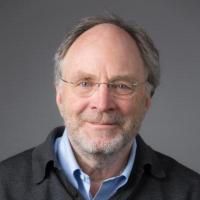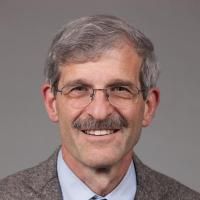The Relation of Accelerometer-Measured Physical Activity and Serum Uric Acid Using the National Health and Nutrition Survey (NHANES) 2003-2004.
Date
2021-01
Journal Title
Journal ISSN
Volume Title
Repository Usage Stats
views
downloads
Citation Stats
Attention Stats
Abstract
Objective: Gout is a crystal-induced inflammatory arthritis caused by elevated uric acid. Physical activity has the potential to reduce serum uric acid (SUA), thus improving the disease burden of gout. In this study, we examined the association of objectively-measured physical activity and SUA. Methods: A cross-sectional study was conducted using survey, laboratory, and accelerometer data from the 2003-2004 National Health and Nutrition Examination Survey (NHANES). SUA concentrations (mg/dL) were obtained during an initial exam, and then physical activity (kCal/day) was measured with 7 days of ActiGraph accelerometry in participants (n = 3,475) representative of the ambulatory, non-institutionalized US civilian population. Regression, including restricted cubic splines, was used to assess the relation of physical activity and SUA in bivariate and adjusted models. Covariates included age, gender, race/ethnicity, alcohol use, body mass index, renal function, and urate-lowering therapy. Results: In the bivariate model, physical activity was correlated with SUA concentrations and included a non-linear component (p < 0.01). In the adjusted model, linear splines were employed with a node at the SUA nadir of 5.37mg/dL; this occurred at 703 kCal/day of physical activity. The association of physical activity and SUA was negative from 0 to 703 kCal/day (p = 0.07) and positive >703 kCal/day (p < 0.01 for the change in slope). Conclusion: Physical activity and SUA are associated in a non-linear fashion, with a minimum estimated SUA at 703 kCal/day of objectively-measured physical activity. These findings raise intriguing questions about the use of physical activity as a potential adjunctive therapy in patients with gout, and further interventional studies are needed to elucidate the effects of moderate intensity exercise on SUA concentrations.
Type
Department
Description
Provenance
Subjects
Citation
Permalink
Published Version (Please cite this version)
Publication Info
Smith, Isaac D, Leanna M Ross, Josi R Gabaldon, Nicholas Holdgate, Carl F Pieper, Tony C Ning, William E Kraus, Kim M Huffman, et al. (2021). The Relation of Accelerometer-Measured Physical Activity and Serum Uric Acid Using the National Health and Nutrition Survey (NHANES) 2003-2004. Frontiers in sports and active living, 3. p. 775398. 10.3389/fspor.2021.775398 Retrieved from https://hdl.handle.net/10161/25619.
This is constructed from limited available data and may be imprecise. To cite this article, please review & use the official citation provided by the journal.
Collections
Scholars@Duke

Isaac David Smith

Leanna Ross
Dr. Ross's research focuses on understanding the mechanisms by which exercise interventions elicit short- and long-term cardiometabolic health benefits. As cardiometabolic disease remains the leading cause of morbidity and mortality in the United States, the goal of her translational research is to enhance the development of evidence-based, precision exercise interventions that optimally prevent and treat disease.
Areas of Research Interest
Exercise dose-response and cardiometabolic health
Insulin action and glucose homeostasis
Legacy health benefits of exercise
Heterogeneity of response to exercise intervention
Precision lifestyle medicine
Epidemiology of physical activity and cardiorespiratory fitness

Carl F. Pieper
Analytic Interests.
1) Issues in the Design of Medical Experiments: I explore the use of reliability/generalizability models in experimental design. In addition to incorporation of reliability, I study powering longitudinal trials with multiple outcomes and substantial missing data using Mixed models.
2) Issues in the Analysis of Repeated Measures Designs & Longitudinal Data: Use of Hierarchical Linear Models (HLM) or Mixed Models in modeling trajectories of multiple variables over time (e.g., physical and cognitive functioning and Blood Pressure). My current work involves methodologies in simultaneous estimation of trajectories for multiple variables within and between domains, modeling co-occuring change.
Areas of Substantive interest: (1) Experimental design and analysis in gerontology and geriatrics, and psychiatry,
(2) Multivariate repeated measures designs,

William Erle Kraus
My training, expertise and research interests range from human integrative physiology and genetics to animal exercise models to cell culture models of skeletal muscle adaptation to mechanical stretch. I am trained clinically as an internist and preventive cardiologist, with particular expertise in preventive cardiology and cardiac rehabilitation. My research training spans molecular biology and cell culture, molecular genetics, and integrative human exercise physiology and metabolism. I practice as a preventive cardiologist with a focus on cardiometabolic risk and exercise physiology for older athletes. My research space has both a basic wet laboratory component and a human integrative physiology one.
One focus of our work is an integrative physiologic examination of exercise effects in human subjects in clinical studies of exercise training in normal individuals, in individuals at risk of disease (such as pre-diabetes and metabolic syndrome; STRRIDE), and in individuals with disease (such as coronary heart disease, congestive heart failure and cancer).
A second focus of my research group is exploration of genetic determinates of disease risk in human subjects. We conduct studies of early onset cardiovascular disease (GENECARD; CATHGEN), congestive heart failure (HF-ACTION), peripheral arterial disease (AMNESTI), and metabolic syndrome. We are exploring analytic models of predicting disease risk using established and innovative statistical methodology.
A third focus of my group’s work is to understand the cellular signaling mechanisms underlying the normal adaptive responses of skeletal muscle to physiologic stimuli, such as occur in exercise conditioning, and to understand the abnormal maladaptive responses that occur in response to pathophysiologic stimuli, such as occur in congestive heart failure, aging and prolonged exposure to microgravity.
Recently we have begun to investigate interactions of genes and lifestyle interventions on cardiometabolic outcomes. We have experience with clinical lifestyle intervention studies, particularly the contributions of genetic variants to interventions responses. We call this Lifestyle Medicopharmacogenetics.
KEY WORDS:
exercise, skeletal muscle, energy metabolism, cell signaling, gene expression, cell stretch, heart failure, aging, spaceflight, human genetics, early onset cardiovascular disease, lifestyle medicine

Kim Marie Huffman
Determining the role of physical activity in modulating health outcomes (cardiovascular disease risk) in persons with rheumatologic diseases (rheumatoid arthritis, gout, osteoarthritis)
Integrating clinical rheumatology, basic immunology, metabolism, and exercise science in order to reduce morbidity in individuals with arthritis
Evaluating relationships between circulating and intra-muscular metabolic intermediates and insulin resistance in sedentary as well as individuals engaging in regular exercise
Addressing the role of physical activity in modulating inflammation, metabolism, and functional health in aging populations
Unless otherwise indicated, scholarly articles published by Duke faculty members are made available here with a CC-BY-NC (Creative Commons Attribution Non-Commercial) license, as enabled by the Duke Open Access Policy. If you wish to use the materials in ways not already permitted under CC-BY-NC, please consult the copyright owner. Other materials are made available here through the author’s grant of a non-exclusive license to make their work openly accessible.
